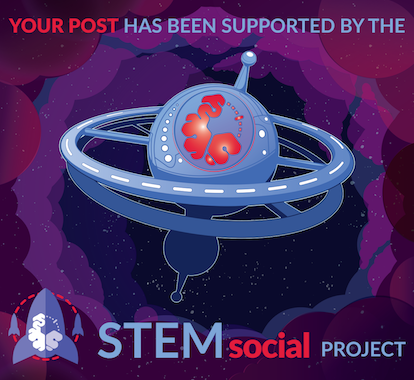
Wind energy provides a vital role in green and clean sources and, therefore, in sustainable economic development. In recent times, wind power generation has been increasing significantly and a growing share of wind power is demonstrating the potential of wind power generation worldwide. To date, conventional wind power generators are based on wind turbines which are the only medium of wind energy harvesting that is connected to our national grid worldwide.
In this article, I am going to share about another technology for wind energy harvesting which can utilize very low wind speed and generate a low amount of power that can be used for decentralized sensor networks for the Internet of Things (IoTs), Environmental/Biomedical sensors, Human Machine Interface (HMI), and Artificial Intelligence (AI) sectors. The technology is known as a 'Triboelectric Nanogenerator' (TENG) that works based on the triboelectrification process when two separate materials come into contact, there will be a flow of electrons. I am not going to deeper mechanism for the common readers here to make it simpler to understand.
My working area is nanotechnology where I am learning about them and fabricating some kind of energy harvesting device and sensors on the base of different effects similar to triboelectric effects such as the ferroelectric effect, piezoelectric effect, thermoelectric effects, and so on. The emergence of new triboelectric nanogenerators for harvesting wind energy is also developing rapidly and attracting the attention of researchers worldwide.
To understand the value of research on wind energy harvesting by triboelectric nanogenerators, it is possible to compare their characteristics with conventional wind turbines and explore the key differences between the two approaches to clarify the advantages of wind energy triboelectric nanogenerators. Specifically, three aspects can be compared in terms of their operating mechanism, characteristics, and applications.
Firstly, I want to compare the mechanistic aspects of a wind energy triboelectric nanogenerator and a conventional wind turbine. In this case, the mechanism of the triboelectric nanogenerator is that of contact electrification and electrostatic induction effects. Contact electrification in a triboelectric generator refers to the displacement of surface charge as a result of the differential attraction of electrons when two different materials make contact. The most positive triboelectric material loses electrons and appears positively charged, while the most negative triboelectric material gains electrons and appears negatively charged. The electrostatic induction is a result of the redistribution of charges by attraction and repulsion under an electric field. The combination of these two effects allows for a constant transfer of charge through an external circuit, thereby generating an electric current.
The mechanism in conventional wind turbines is derived from electromagnetic induction, the essence of which is that a changing magnetic field creates an electric field. As the wind drives the rotation of the fan blades in a wind turbine, the rotation of the magnets leads to a change in the magnetic field, thereby generating an electric potential and an electric current in the complete circuit. One difference in the two principles indicates that triboelectric nanogenerators are simpler to implement since the mechanism is simpler and only requires the friction of two different materials.
A more comprehensive comparison of wind energy triboelectric nanogenerators and conventional wind turbines can also be made in terms of their characteristics. In terms of size, conventional wind turbines can have blades and tower several tens of meters high, whereas the dimensions of wind energy triboelectric nanogenerators are typically very small, perhaps as small as a few centimeters. The weight of conventional wind turbines is also much larger than that of wind energy triboelectric nanogenerators; the mass of a conventional wind turbine is much greater than that of a wind energy triboelectric nanogenerator, because of both size and the material employed.
The range of wind speed for conventional wind turbines is typically 3-25 m/s, whereas wind energy triboelectric nanogenerators can collect wind at both lower and higher wind speeds, from nearly 0.2 m/s to greater than 50 m/s. The wind speed range for wind energy triboelectric nanogenerators is greater than that of conventional wind turbines. In terms of output, conventional wind turbines typically have high currents and low voltages, but in general, they have a greater power output than wind energy triboelectric nanogenerators due to their large size. In addition, conventional wind turbines have a much longer lifetime than wind triboelectric nanogenerators and are higher cost compared to wind triboelectric nanogenerators.
Finally, comparisons can also be made in terms of their applications. In terms of geography, conventional wind turbines need to be located in flat, open, remote, and wind-rich areas. In contrast, wind triboelectric nanogenerators do not such requirements and can be used in a much wider range of environments, from deserted suburbs to densely populated cities. In terms of application areas, while conventional wind turbines provide large-scale power, wind triboelectric nanogenerators can collect micro-scale energy directly to provide power to small electronic devices. But in the future, it will also be possible to prepare large TENG plants and integrate them in such a way that power plants can be built that can supply electricity on a large scale.
Conventional wind turbines cannot be easily moved once they have been built and installed, whereas wind triboelectric nanogenerators can be portable and re-located much more easily, which is an important advantage in applications such as collecting wind energy generated by human movement. In terms of safety, conventional wind turbines generate a certain amount of noise during operation, and the rotation of the blades leads to many bird deaths each year, which has an impact on humans and the environment. The wind energy triboelectric nanogenerator is much safer and does not have the safety implications of a conventional wind turbine due to its size and construction.
As a result, there has been a rapid expansion of triboelectric nanogenerators for wind power in recent years, especially in various portable sensor applications. Though the output is still at a very tiny level it can be uplifted with various technologies and the integration of many devices together. If you have any queries, let me know in the comments, and I will try my best to answer them.
Thanks a lot for your time and attention. I will catch up with you at the next one.
Wish you a great day!







